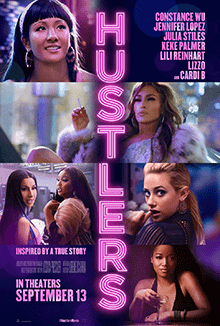
In Ad Astra, the galaxy’s only hope is Brad Pitt’s interstellar mission to find his long-lost father and his experiment-gone-wrong, which is causing deathly surges across the galaxy. In real life, our only hope is projects as ambitious, imaginative, and captivating as Ad Astra. From scene one, I was gasping for air and holding onto my seat — in the opening moments, the camera reveals Pitt walking on a space tower standing thousands of feet above the Earth. Immediately, the space between your seat and the setting feels no more, and you are transported onto that tower with him, gazing down at the heights beneath you, as anxious and fearful as Pitt’s character would be on such a high structure. You don’t have to imagine how he’s feeling, because you’re no longer in your theater, you’re there with him. Director James Gray immerses you into a futuristic version of our galaxy, where traveling to the moon is a casual pastime — and they even have Subways there. Nothing quite feels like Ad Astra — the originality shown as we journey through otherwordly military bases, territory wars, and space guns, demonstrates the spark of imagination this film has, and it feels like it could become the Blade Runner of our generation. Nothing looks like a set or a computer-generated effect — like Interstellar and First Man, it feels like we may as well be looking at HD footage sent back from the Hubble telescope. The visuals are so gripping and with a clearly fictional setting that still feels so real and will keep you on the edge of your seat, and the camera makes you part of an immersive journey to the other side of the solar system. For a filmmaker who’s never established himself as a high-budget director to suddenly make the jump to a visually impeccable galactic sci-fi adventure, it’s truly incredible. The cinematography achieves its goal often by putting you in Pitt’s perspective or showing the things going on through the reflection of his space mask where we also see his reaction. Even the wider shots that establish the scale of the scenes serve as immersive eye candy.
Our stunning ventures with Roy McBride bring him closer to our heart, but it’s really Pitt’s delivery that will makes its way into your emotions. For a character who spends a lot of the film trying to distance his emotions from those around, Brad Pitt makes you feel very close to him by subtly delivering his reactions to the screen scene by scene so that when he finally does crack and get sentimental, all the emotion comes pouring down on you. You will certainly be rooting for Pitt to find his father and achieve his objective and feel devastated when his character faces another emotional obstacle. The movie also raises some strong themes about humankind’s search for what’s beyond the stars and our lack of appreciation for what we have down on Earth. But there’s also more personal themes, like the impact that the abandonment of a child by their parent has on them growing up. Gray relies less on dialogue and heavily on the visual movement to carry the story forward so that you still deeply care what will happen and your heart will race during the most intense sequences. The story is rather simple as opposed to mind-blowing sci-fi hits like Interstellar and Arrival where the plot is so complex that some may have to talk it out to really take in what happen, but despite the simplicity, you can never really tell what’s going to happen next because of the immersive scale and the outstanding screenplay. If I had to change one thing, it’s that the movie is heavy on narration from Pitt, which for some, this may make up for the scenes that have less talking. However, I personally felt that in certain scenes, simply telling us how to feel rather than showing it actually lowers the emotional punches of some scenes, when relying more on visual storytelling, like flashbacks and Pitt’s expressions, strengthens the effect it has on viewers. I would have omitted most or nearly all of the narration, because a lot of the time, as cliche as it may sound, less is more. Other than that, I need to see that Ad Astra is a mezmerizing visual masterpiece and a gripping voice through space. It’s originality, imagionation, and ambition make it a striking standout this year, but the storytelling requires more patience than the average moviegoers today than are experiencing exposure to more and more franchise/genre films and not much else. Yet what makes it so great is the terrific leading role from Pitt, which continues his winning streak from earlier this year in Once Upon a Time in Hollywood — plus the beautiful cinematography and visual effects that make the experience so thrilling, and the meditative and poetic themes and tone that lie beneath all the beauty. Yes, it may only be truly appreciated if seen on the big screen, but that’s why there’s no excuse to not watch it in theaters.






